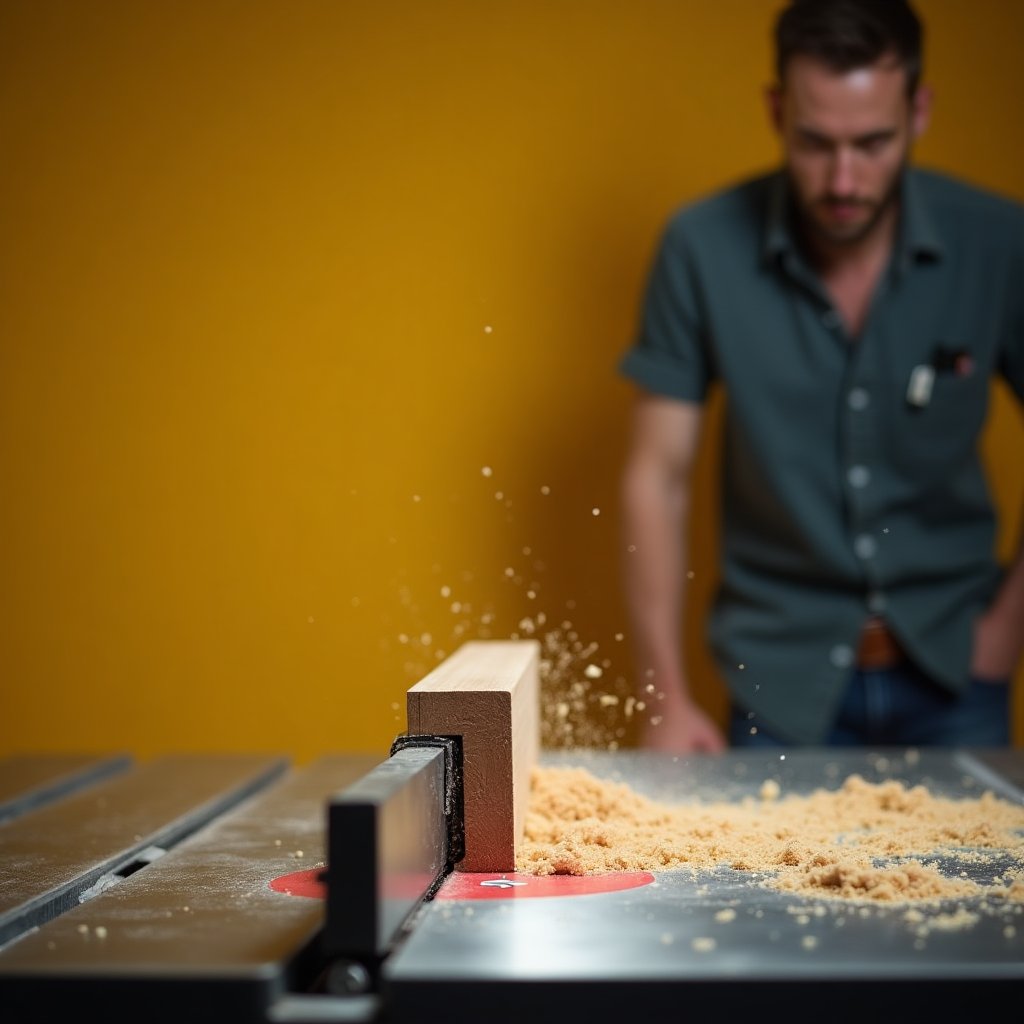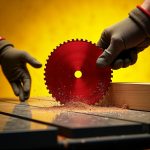We’ve all had those moments—those *dumb ideas* that seem brilliant at the time but later make us cringe. For James Hamilton, the mastermind behind the Stumpy Nubs YouTube channel, one such idea was designing a rocking chair that rocked side to side. But as he explains in his latest video, some ideas aren’t just dumb—they’re downright dangerous. Today, we’re diving into one of those ideas: standing on the wrong side of a table saw. Spoiler alert: it’s a disaster waiting to happen.
Before you roll your eyes and say, “The internet is full of bad ideas, why should I care about this one?” let me stop you right there. This particular idea has been suggested in the comments of Stumpy Nubs’ videos *multiple times*, including twice just last week. And while the people suggesting it might not be dumb (they probably just don’t use table saws often), the idea itself is a recipe for disaster. So, let’s break it down and see why this is one of the worst woodworking hacks you could ever try.
The Two Worst Table Saw Ideas You’ll Ever Hear
According to Stumpy Nubs, there are two shockingly common suggestions for avoiding table saw kickback—both of which are terrible. The first is standing on the *opposite side of the fence*, and the second is standing on the *opposite side of the table saw* and pulling the workpiece toward you. Let’s tackle the second one first because, honestly, it’s the one that makes me cringe the most.
1. Pulling the Workpiece Toward You: A Disaster in the Making
Imagine this: you’re standing on the opposite side of the table saw, pulling the workpiece toward you. Sounds harmless, right? Wrong. Here’s why. When you make a rip cut, you’re not just pushing the wood forward—you’re also applying lateral pressure to keep it against the fence. This lateral pressure is crucial for a clean, safe cut. But if you’re pulling the wood toward you, how do you apply that pressure? You’d have to lean over the blade, reaching around it to guide the wood. Does that sound safe to you? Spoiler: it’s not.
Some folks suggest using a featherboard to eliminate the need for lateral pressure and a hooking device to pull the wood through. Sounds good in theory, but in practice? Not so much. Longer workpieces would hang off the opposite side of the saw, making it nearly impossible to guide them properly. And forget about cutting plywood panels—you’d need telescopic arms to pull that off. If a kickback were to occur, you’d be at a much higher risk of pulling your hands into the blade. Yikes.
2. Standing on the Opposite Side of the Fence: Just as Bad
Now, let’s talk about the second bad idea: standing on the opposite side of the fence. Some people swear this is the “proper” way to make a cut, but Stumpy Nubs begs to differ. Why? Because it’s awkward, unstable, and downright dangerous. Applying lateral pressure from the opposite side of the fence requires you to lean over the saw, which is not only uncomfortable but also increases the risk of losing control. And if you’re cutting a wide board? Forget it—you’d be leaning so far over, you might as well be doing yoga on the table saw.
Again, some suggest using a featherboard to apply lateral pressure while you push the workpiece forward. But this only works with small pieces. Longer boards require a two-handed feed, and plywood? Forget about it. It’s just not practical.
The Real Solution: Use Your Blade Guard
So, what’s the solution to avoiding kickback? It’s simple: use your blade guard. Most blade guards come with a built-in splitter that prevents the wood from pinching or wedging against the blade, which is the primary cause of kickback. If you don’t have a blade guard (or you’re one of those people who refuses to use one), a riving knife or even a homemade splitter can provide similar protection.
And if you’re still worried about getting hit by a flying piece of wood, you can position your body out of the direct path of the blade without changing the side of the saw or the fence. Table saws can be safe and valuable tools—if you use them properly.
A Game-Changing Wood Finish: Clean Armor
Now, let’s shift gears and talk about something exciting: Clean Armor, a new wood finish that Stumpy Nubs is raving about. This stuff is a game-changer. It goes on easily, contains no harmful VOCs, and fully cures in just two minutes with the help of a UV light. Plus, it offers incredible protection—even against harsh chemicals like acetone. If you’re looking for a finish that’s as durable as it is easy to use, Clean Armor is worth checking out.
Watch the Original Video
If you want to see Stumpy Nubs break down these bad ideas in action, check out the original video below:
Final Thoughts: Safety First, Always
At the end of the day, woodworking is about creativity, precision, and—most importantly—safety. Standing on the wrong side of a table saw might seem like a clever hack, but it’s a shortcut that could cost you dearly. So, stick to the basics: use your blade guard, keep your body out of the line of fire, and always prioritize safety over convenience.
What’s the worst woodworking advice you’ve ever heard? Have you ever tried one of these “hacks” and lived to tell the tale? Share your thoughts in the comments below. And if you’re looking for more tips, tricks, and woodworking wisdom, join the iNthacity community—the “Shining City on the Web.” Like, share, and let’s keep the conversation going!
For more woodworking plans and projects, check out Ted’s Woodworking Plans—your ultimate guide to mastering the craft.
Wait! There's more...check out our gripping short story that continues the journey: The Equilibrium
Disclaimer: This article may contain affiliate links. If you click on these links and make a purchase, we may receive a commission at no additional cost to you. Our recommendations and reviews are always independent and objective, aiming to provide you with the best information and resources.
Get Exclusive Stories, Photos, Art & Offers - Subscribe Today!


























Post Comment
You must be logged in to post a comment.